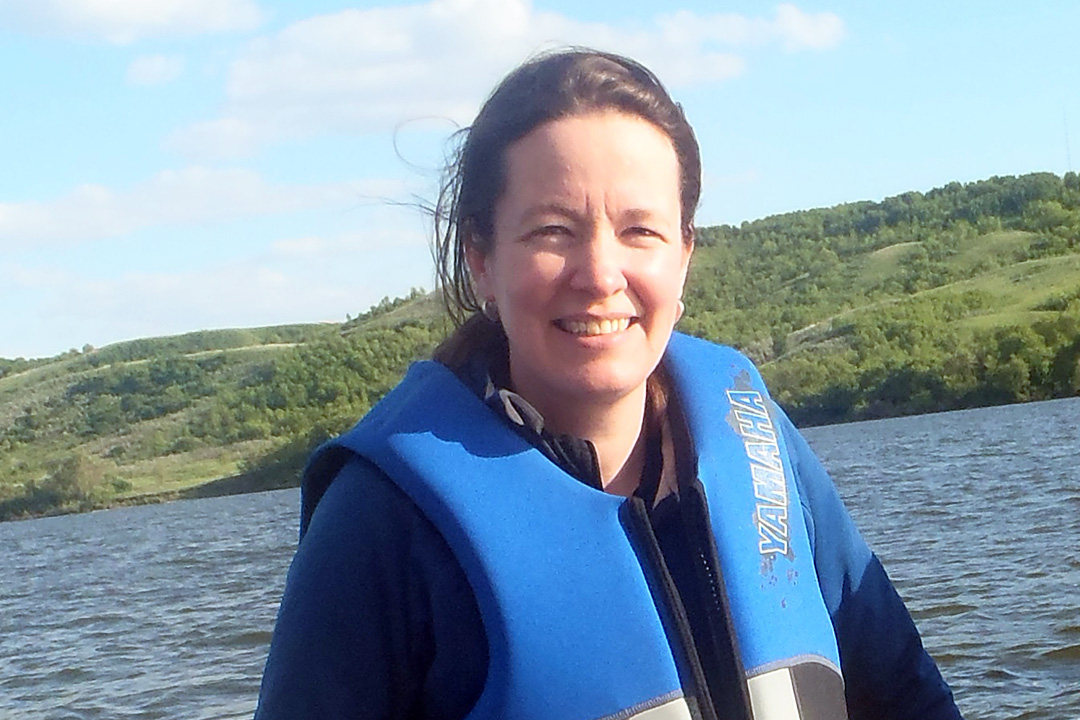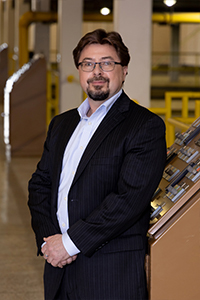
USask researcher’s cutting-edge buoy aims to secure water source for Regina and Moose Jaw
SASKATOON – A strong partnership between University of Saskatchewan (USask) researcher Dr. Helen Baulch (PhD) and the Buffalo Pound Water Treatment Plant is bringing cutting-edge monitoring equipment to Saskatchewan to advance lake science and safeguard drinking water for 260,000 people.
The independent board of directors of the plant, owned by the cities of Regina and Moose Jaw, in collaboration with plant president and CEO Ryan Johnson, has approved the purchase of a custom-designed $250,000 high-tech buoy that’s been nicknamed Superbuoy. It comes equipped with research-grade weather and atmospheric monitors, and an array of winter-hardy water quality sensors for year-round use.
“From a research perspective, the Superbuoy provides continuity as well as some neat new tools,” said Baulch, associate professor in USask’s School of Environment and Sustainability, and Centennial Enhancement Chair in Aquatic Ecosystem Biogeochemistry.
“For example, it has cutting-edge sensors to more accurately measure carbon dioxide that’s important to lake ecology, and some new cameras with telemetry so that we are able to monitor the lake surface for scum, from our desks in Saskatoon and get down there to sample it.”
The new buoy is expected to arrive in time for the 2022 summer season, a period when huge algal blooms can occur on Buffalo Pound Lake, and when rapid changes to conditions, such as large temperature variations between upper and lower lake levels, sometimes cause major problems for the plant that supplies potable water to Regina, Moose Jaw and nearby areas.
“Climate change and changes to land use are putting unprecedented pressure on prairie aquatic systems and increasing risks of harmful cyanobacterial (blue green algae) blooms,” said Baulch.
“Because Buffalo Pound Lake is so shallow, things like algae growth and water temperature change pretty quickly. The plant operators have seen those changes affect their operations, and our research collaboration has really helped troubleshoot and anticipate some of those changes.”

The Superbuoy will replace Baulch’s current monitoring equipment, which was funded by the Canada Foundation for Innovation eight years ago and is nearing the end of its useful life. Baulch spent a couple of months consulting with the supplier, Hoskin Scientific of British Columbia, on designing elements of the new buoy, including enabling some sensors to be nestled in a metal cage under lake ice to provide year-round monitoring.
For Blair Kardash, manager, laboratory and research at the treatment plant, the partnership with Baulch underlines the value of academic-industrial co-operation. The uncertainty of grant approvals and the need to have in place a replacement buoy in time for 2022 led to the purchase, he said.
“We want to support Dr. Baulch’s continued research in limnology (the study of lakes) at Buffalo Pound. In doing so, we also get the benefit of having real-time monitoring for rapid changes in water quality, as well the benefits from her long-time research on cyanobacteria.”
Both he and Baulch point to an emergency water restriction in Moose Jaw and Regina in 2015 as a situation that highlights the value of closely monitoring lake water. The problem was caused by thermal stratification in the lake affecting water clarifiers in the plant, cutting treatment capacity in half.
Baulch and Kardash have since developed “decision trees” on how to use the sensor data to adapt plant operations during periods of stratification extremes, and to advise the cities to have enough water in their reservoirs to ride out any potential treatment slowdowns.
The collaborative work has also involved understanding and troubleshooting problems involving the buoyancy of cyanobacteria types that recently have been affecting the plant’s clarifiers.
To enact timely reduction strategies at the plant in response to a recent change in Health Canada’s allowable limits of manganese in drinking water, they are also working to understand why manganese levels sometimes rise dramatically in winter.
“It’s really rewarding as a researcher to feel like the work we do can be put into practice here quite quickly,” said Baulch.
For more information, contact:
Victoria Dinh
USask Media Relations
306-966-5487
victoria.dinh@usask.ca
Ryan Johnson
President and CEO, Buffalo Pound Water
306-694-1377 Ext. 230
306-631-3362
ryanj@buffalopoundwtp.ca
Article re-posted on .
View original article.

